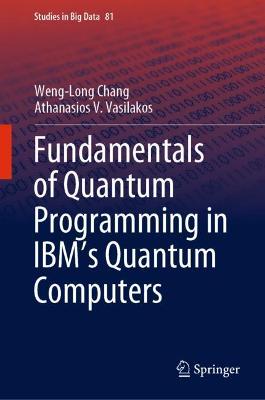Studies in Big Data
2 primary works
Book 4
This textbook introduces a concise approach to the design of molecular algorithms for students or researchers who are interested in dealing with complex problems. Through numerous examples and exercises, you will understand the main difference of molecular circuits and traditional digital circuits to manipulate the same problem and you will also learn how to design a molecular algorithm of solving any a problem from start to finish. The book starts with an introduction to computational aspects of digital computers and molecular computing, data representation of molecular computing, molecular operations of molecular computing and number representation of molecular computing and provides many molecular algorithm to construct the parity generator and the parity checker of error-detection codes on digital communication, to encode integers of different formats, single precision and double precision of floating-point numbers, to implement addition and subtraction of unsigned integers, to construct logic operations including NOT, OR, AND, NOR, NAND, Exclusive-OR (XOR) and Exclusive-NOR (XNOR), to implement comparators, shifters, increase, decrease, and to complete two specific operations that are to find the maximum number of "1" and to find the minimum number of "1". The book is also a useful reference source to people new for the field of molecular computing.
Book 81
Fundamentals of Quantum Programming in IBM's Quantum Computers
by Weng-Long Chang and Athanasios V. Vasilakos
This textbook introduces major topics that include quantum bits, superposition, entanglement, logic gates, quantum search algorithm, quantum Fourier transform, inverse quantum Fourier transform, Shor’s order-finding algorithm and phase estimation. Everyone can write algorithms and programs in the cloud making using IBM’s quantum computers that support IBM Q Experience which contains the composer, open quantum assembly language, simulators and real quantum devices. Furthermore, this book teaches you how to use open quantum assembly language to write quantum programs for dealing with complex problems. Through numerous examples and exercises, readers will learn how to write a quantum program with open quantum assembly language for solving any problem from start to complete.
This book includes six main chapters:
·Quantum Bits and Quantum Gates—learn what quantum bits are, how to declare and measure them, what quantum gates are and how they work on a simulator or a real device in the cloud.
·Boolean Algebra and its Applications—learn how to decompose CCNOT gate into six CNOT gates and nine gates of one bit and how to use NOT gates, CNOT gates and CCNOT gates to implement logic operations including NOT, OR, AND, NOR, NAND, Exclusive-OR (XOR) and Exclusive-NOR (XNOR). ·Quantum Search Algorithm and its Applications—learn core concepts of quantum search algorithm and how to write quantum programs to implement core concepts of quantum search algorithm for solving two famous NP-complete problems that are the satisfiability problem in n Boolean variables and m clauses and the clique problem in a graph with n vertices and q edges. ·Quantum Fourier Transform and its Applications—learn core concepts of quantum Fourier transform and inverse quantum Fourier transform and how to write quantum programs to implement them for solving two real applications that are to compute the period and the frequency of two given oracular functions.·Order-Finding and Factoring—learn core concepts of Shor’s order-finding algorithm and how to write quantum programs to implement Shor’s order-finding algorithm for completing the prime factorization to 15.
Phase Estimation and its Applications—learn core concepts of phase estimation and quantum counting and how to write quantum programs to implement them to compute the number of solution(s) in the independent set problem in a graph with two vertices and one edge.

